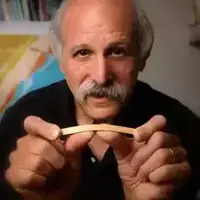Websites for Teaching and Learning Identification of Minerals and Rocks in Introductory Physical Geology
Leader
 Scott Brande, University of Alabama at Birmingham
Scott Brande, University of Alabama at Birmingham
Demonstration
Open website access is online now. Check out the following.
minerals: http://omg.georockme.com
igneous rocks: http://igg.georockme.com
sedimentary rocks: http://seg.georockme.com
metamorphic rocks: http://meg.georockme.com
Examples of use will be available for all devices (laptops, tablets, cellphones). Examples of how observation of website media can be integrated with learning objectives typically restricted to the face-to-face environment. A feedback form will be provided for participants to help iterate website content for the broader community.
Abstract
An abundance of digital media that exhibit minerals and rocks are available online. However, most of these media have not been designed and produced for typical laboratory-based learning activities and objectives that require observation, determination of properties, comparison with reference charts and tables, and finally a decision on identification by name.
I created websites for each of the four material-based identification activities in a typical introductory physical geology laboratory course: minerals, igneous, sedimentary, and metamorphic rocks.
Each website is designed to provide digital media focused on the identification process. Content includes a simplified classification chart, Youtube videos that demonstrate how physical tests are done and observations are made, and a limited number of known minerals or rocks in a "bank" to which unknown samples are compared, and other material, such as links to online image archives and references.
Samples include the most common unknowns. Videos show samples subjected to the same tests a student would perform in lab. Observing the videos and images enables a student to acquire nearly the same observational information as when manipulating a physical sample.
Students may engage the identification process for minerals and rocks through these new websites, publicly available without charge.
Context
I created the websites as a supplement to a face-to-face laboratory study of mineral and rock identification, as an off-campus, online resource for study after lab and in preparation for a follow-up quiz, and for students who miss lab but who still need to prepare responses for alternative laboratory credit.
Why It Works
In my experience, increasing numbers of students miss attending lab. Because I do not have a designated lab room for my course, students who miss attending lab do not have access to study laboratory samples or use equipment and are thus less prepared for a following assessment.
I created and continue to enhance my websites to provide students an alternative path for learning basic procedures for mineral and rock identification.
New media I created provide a visual experience similar, and in some ways superior, to the student examination of physical samples of minerals and rocks in a typical introductory physical geology laboratory course. Specifically, I created digital images and short videos for each individual "test" in which a student would normally engage during a laboratory session. For example, during a mineral identification laboratory, a student would typically test individual (and unknown) mineral samples for hardness, streak, magnetism, reaction to acid, etc. I created the mineral website that distributes pages with guided viewing instructions, text and individual image and videos that show what the on-ground student would see during each of these tests. What's missing in the observation of digital content online is the manipulation part of the activity. However, the cognitive core in mineral and rock identification activities is what happens after observation – evaluating test results against reference materials. Websites populated with appropriate and high quality digital media may therefore provide an alternative pathway for students to engage, interpret and integrate information needed for the mineral and rock identification process.
Although introductory physical geology is taught online by an increasing number of faculty, a previous survey I conducted at EER18 demonstrated that few faculty teach introductory physical geology laboratory in an online environment because of numerous unsolved problems of both technology and pedagogy.
My websites are an initial effort towards fostering discussion in the community on the design, content, and learning objectives required for student learning material identification in the introductory physical geology laboratory online.
Presentation Media
Introduction to Online Physical Geology Labs for Rocks and Minerals (Acrobat (PDF) 2.2MB Jul13 20)
Connection Info
This event has already occurred.
